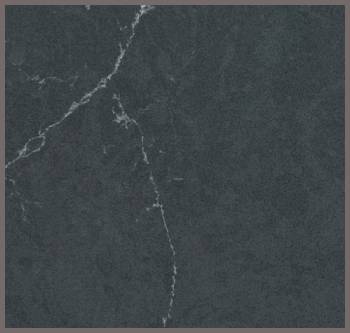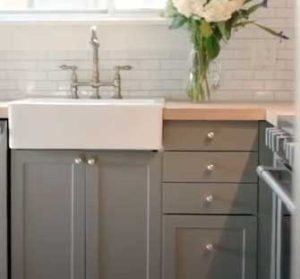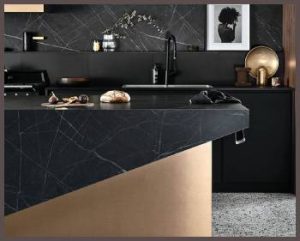If you’re in the market for a new countertop, the plethora of options available can feel downright dizzying. In today’s review, we’re focusing on a standout product from a renowned manufacturer – the Silestone Charcoal Soapstone Suede.
Hailed for its aesthetic appeal and durability, we delve into the merits and drawbacks of this quartz surface.
Unpacking the Pros of Silestone Charcoal Soapstone Suede

- Beauty in Its Simplicity
Charcoal Soapstone Suede isn’t just a color; it’s an artistic statement. This material displays an arresting deep gray hue with subtle veining reminiscent of the metamorphic rock that inspired it. For homeowners looking to imbue their spaces with a touch of timeless elegance, this material ticks all the right boxes.
- Unmatched Durability
As part of Silestone’s quartz product line, Charcoal Soapstone Suede promises an impressive lifespan. Being a non-porous surface, it’s remarkably resistant to stains and scratches. This aspect alone makes it an ideal option for busy households and high-traffic areas.
- Easy to Clean and Maintain
Maintaining this countertop is a breeze. With Silestone Charcoal Soapstone, there’s no need for periodic sealing, making it a convenient and cost-effective solution. Just a simple wipe-down with a mild detergent keeps it looking as good as new.
Read More: About Kolay Luxury Vinyl Flooring
Considerations Before Choosing Charcoal Soapstone Suede

- Potential for Visible Fingerprints
While the ‘suede’ finish is beautiful, it’s also a fingerprint magnet. For those who aren’t fans of constantly wiping down surfaces, this could be a sticking point.
- The Price Tag
Quality comes at a cost. Silestone Charcoal Soapstone Suede sits on the higher end of the price spectrum. Therefore, it may not be the best fit for budget-conscious homeowners.
- Limited Outdoor Application
Although it’s resistant to scratches and stains, it’s not immune to UV rays. Long-term exposure can lead to discoloration, limiting its use in outdoor spaces.
Frequently Asked Questions (FAQs)
Although Silestone Charcoal Soapstone Suede is non-porous and highly stain-resistant, certain substances (like coffee or wine) can leave a temporary mark if not cleaned promptly. However, with proper care and maintenance, staining isn’t a concern.
Charcoal Soapstone is a rich, deep gray color. Its aesthetic closely mimics natural soapstone, complete with subtle white veining, giving it an elegant and timeless appeal.
Charcoal Soapstone Quartz is a variant of engineered quartz offered by Silestone. It recreates the look of natural soapstone while providing the durability and easy maintenance associated with quartz surfaces.
Silestone is an engineered quartz product, renowned for its durability and non-porous nature. On the other hand, soapstone is a naturally occurring metamorphic rock that’s softer and requires regular maintenance, but offers a unique, warm aesthetic.
Caring for Silestone Charcoal Soapstone is simple. Regular cleaning with a mild detergent and a soft cloth is enough. Unlike natural stone surfaces, there’s no need for sealing, making it a hassle-free countertop option.
Yes, typically, charcoal is a deeper shade of gray when compared to slate gray. However, the precise shade can vary based on the manufacturer’s interpretation.
Read More: About Everbright Flooring
Close Competitors: A Comparative Analysis
When looking at Silestone Charcoal Soapstone Suede, it’s also worth considering other market competitors.
- Caesarstone Raw Concrete Quartz
Like the Charcoal Soapstone Suede, Caesarstone Raw Concrete Quartz delivers a visually impressive and hardwearing quartz surface. However, while the Raw Concrete offers a modern industrial aesthetic, the Charcoal Soapstone leans towards a classic, more natural look.
- Cambria Skara Brae Quartz
Cambria’s Skara Brae Quartz provides a similar grayish palette but with more pronounced veining. While both offer similar levels of durability and ease of maintenance, the Skara Brae’s extravagant vein patterns may not suit all interior styles like the versatile Charcoal Soapstone does.
- LG Hausys Rococo Quartz
Rococo Quartz by LG Hausys delivers a lighter gray hue compared to the Silestone Charcoal Soapstone. While it boasts a similar level of durability, Rococo might show stains more readily due to its lighter color, unlike the darker Charcoal Soapstone.
The Final Verdict
In conclusion, Silestone Charcoal Soapstone Suede makes a persuasive argument for those looking for a blend of beauty and resilience. Its subtle, refined color palette suits a range of interiors, and its hardiness stands up to even the most bustling of kitchens. However, prospective buyers should consider its higher cost and potential for visible fingerprints.
Though it has some stiff competition in the market, its compelling combination of aesthetics, durability, and low-maintenance characteristics makes it a compelling choice for a wide range of homeowners. As with all major home improvement decisions, it’s crucial to weigh the pros and cons carefully to ensure that the chosen product aligns with your lifestyle, preferences, and budget. But for those who value the mix of timeless elegance and modern performance, Silestone Charcoal Soapstone Suede makes a strong case indeed.



